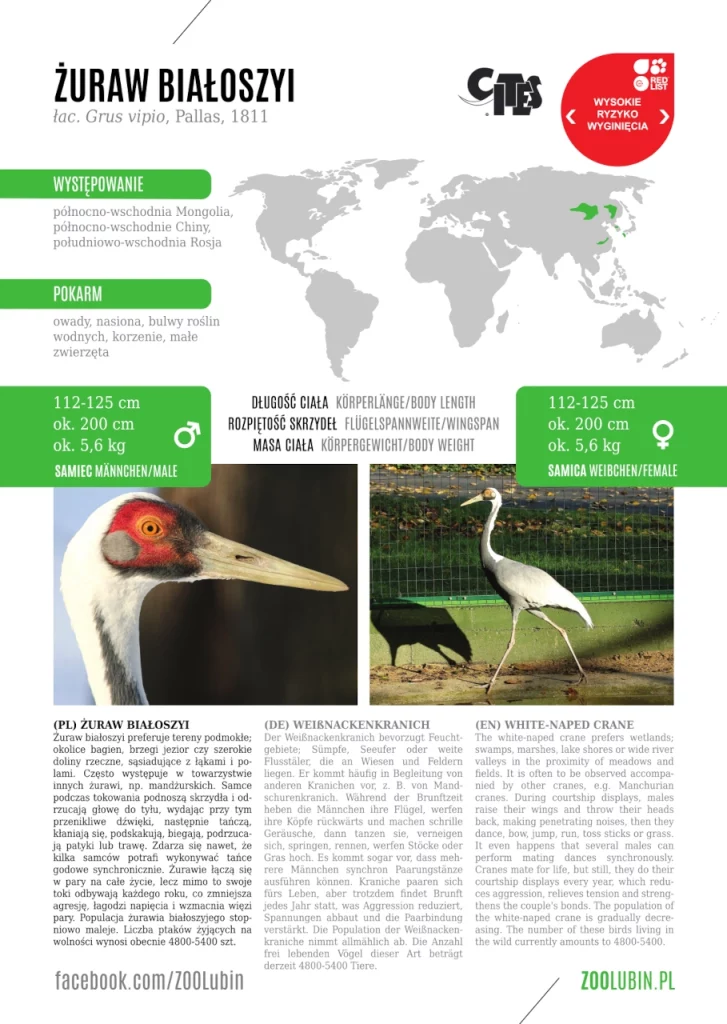
DOWNLOAD THE SPECIES LABEL – PDF file (size 2719 KB)
White-naped crane
łac. Grus vipio, Pallas, 1811
The white-naped crane prefers wetlands; swamps, marshes, lake shores or wide river valleys in the proximity of meadows and fields. It is often to be observed in the company of other cranes, e.g. Manchurian cranes. During courtship displays, males raise their wings and throw their heads back, making piercing noises; then they dance, bow, jump, run, toss sticks or grass. Sometimes several males can perform synchronised mating dances. Cranes mate for life, but nevertheless they still do their courtship displays every year, which reduces aggression, relieves tension and strengthens the couple’s bonds. The population of the white-naped crane is gradually decreasing. The number of these birds living in the wild is currently at 4800–5400 individuals.
Distribution: Northeast Mongolia, Northeast China, Southeast Russia
male / female
body length: 112–125 cm
wingspan: ca. 200 cm
body mass: ca. 5,6 kg
